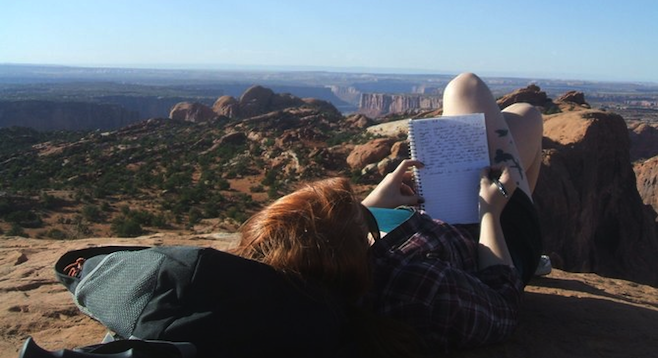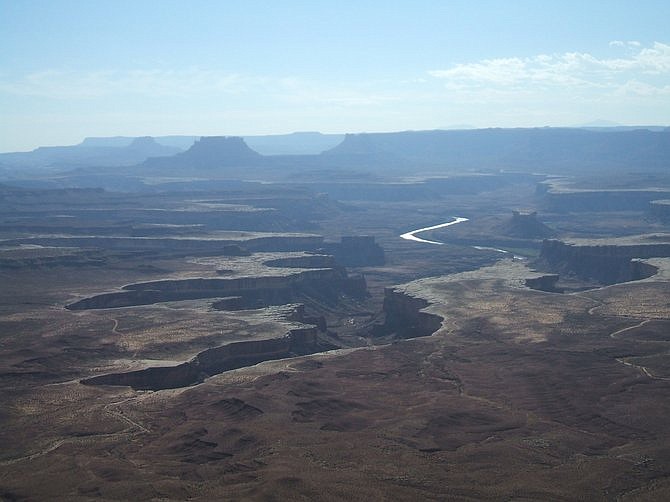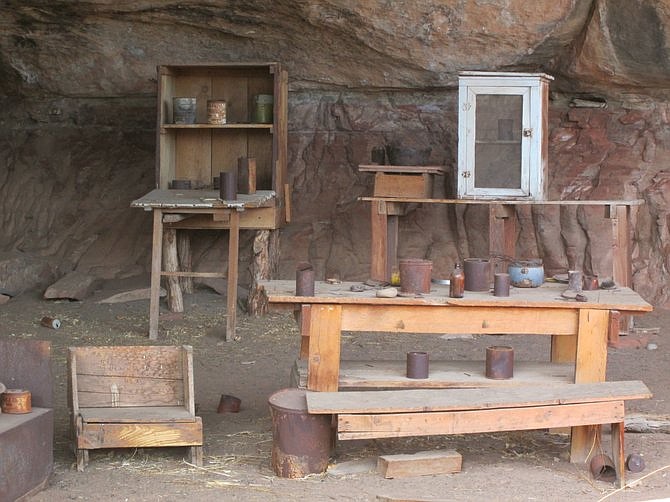 Facebook
Facebook
 X
X
 Instagram
Instagram
 TikTok
TikTok
 Youtube
Youtube

After exploring the dizzy heights of the Grand Canyon, Zion and Bryce National Parks, we had low expectations for Utah’s lesser-known Canyonlands. One week on the road and landscape fatigue was starting to wear us down – and who wants to live in a world where canyons and mountains no longer incite passion?
Thankfully, Canyonlands was the perfect curative. Imagine a lower, more accessible and more tangible Grand Canyon, where two mighty rivers converge in dramatic splendor.

The park’s divided into four areas. The main visitor center at Islands in the Sky is an ideal first glimpse of the deep canyons where the Colorado River meets the Green River (yep, that infamous Green River).
We hiked along the rim to take in the view before driving down to the Mesa Arch – a picturesque natural bridge – and onwards to Upheaval Dome. Confusingly, Canyonlands was the quietest National Park on our Grand Circle tour, despite being just as breathtaking as some of the big players. A couple of the major overlooks were deserted when we pulled up.
Upheaval Dome is a huge crater nestling between mountains. Scientists aren’t sure if it was caused by a salt pit evaporating or a meteorite hitting the earth 60 million years ago and taking out a few dinosaurs (the second theory, obviously. It ‘s much cooler). The overlook was breathtaking. I took the opportunity to relax and write up my journal while my husband scrambled up the adjacent peak for an even grander view.
On our way out of the park, a ranger told us about an amazing hike on the east side of Canyonlands that led to an abandoned cowboy outpost and some Indian pictographs. After an evening of toasting s’mores at our cabin in Moab, we headed to the other side of the park, The Needles, to take up the ranger’s advice.

The first stop of the day was the short and easy Cave Spring hike to the abandoned outpost. It was a fabulous find among the ramshackle fencing and scrub: an open-to-the-elements outpost for ranchers who used to work off the land. The accoutrements of cowboy luxury are still set out for use – wooden tables and a makeshift stove, leather chaps and belts, rusting coffee pots and a grain bin – so it’s easy to imagine life roughing it under the stars. We had to rely on the zoom function for photos, as the outpost and artifacts are fenced off from curious hands.
Further along the trail we discovered a series of painted Indian pictographs on the wall of a cave. Most of pictographs were child-sized red and black handprints – anyone remember the finale of Blair Witch Project in the cellar? – and pretty creepy. Thankfully it was a sunny day or I would have been out of that cave like a bat. I don’t know why the artists chose to paint so many hands or what happened to that particular tribe, but I had a horrible feeling it wasn’t good. The trail also takes you up a couple wooden ladders (the safest way to traverse the slickrock) for an overview of the geography on the east side of the park.
We did a couple of other short hikes around the canyons but had to find our accommodation for the night, a rustic yurt, before it got dark.
We did make a final stop at the interesting Newspaper Rock en route. Expecting a boring stack of paper-like formations, we found instead a huge rock face scrawled with 2000 years’ worth of pictographs and graffiti. The Navajo call it Tse’ Hane’ or “the rock that tells a story” and it’s easy to see why; most of the drawings are random designs, but if you take the time you can spy bison, bighorn sheep, eagles and some scary, many-legged centipede-god.
After five miles of dusty backroads around Monticello, we found our yurt. I was a little apprehensive of our night’s accommodation but... yurts are cool!
Basically, it was a huge round Mongolian tent fitted out with gorgeous secondhand (“rescued”) furniture and a woodstove, with a fire pit outside on six acres of private land. It even had a little outhouse with a solar shower. A fine introduction to the worlds of “glamping” and “yurtcation.”
After braving the freezing solar shower (has anyone ever got one of these eco-devices to work?), we were collecting firewood when all of a sudden we had a visitor: a friendly mastiff from a neighboring farm. I thought she was a coyote and almost threw a log at her, but she became our best friend, begging at our door as we grilled up steak and more s’mores.
I felt much safer sleeping at night (after watching one too many American Horror Story episodes on my laptop) knowing that we had a guard dog bounding around outside to chase off bugs and creepies and whatever else we should be worrying about.
We could have easily spent a week exploring the different geographical features of Canyonlands from our cozy yurt, but we had many more miles to make before the end of our trip.
It saddens me to know that better-known (but not necessarily more impressive) parks like Arches and Bryce rake in so many more tourists a year, but it is also a privilege to take the road less traveled at least once and avoid the crowds for a few days. If you’re a fan of deep and decadent canyons and awesome vistas (in the true sense of the word “awesome”), then you definitely have to add Canyonlands to your vacation list.


After exploring the dizzy heights of the Grand Canyon, Zion and Bryce National Parks, we had low expectations for Utah’s lesser-known Canyonlands. One week on the road and landscape fatigue was starting to wear us down – and who wants to live in a world where canyons and mountains no longer incite passion?
Thankfully, Canyonlands was the perfect curative. Imagine a lower, more accessible and more tangible Grand Canyon, where two mighty rivers converge in dramatic splendor.

The park’s divided into four areas. The main visitor center at Islands in the Sky is an ideal first glimpse of the deep canyons where the Colorado River meets the Green River (yep, that infamous Green River).
We hiked along the rim to take in the view before driving down to the Mesa Arch – a picturesque natural bridge – and onwards to Upheaval Dome. Confusingly, Canyonlands was the quietest National Park on our Grand Circle tour, despite being just as breathtaking as some of the big players. A couple of the major overlooks were deserted when we pulled up.
Upheaval Dome is a huge crater nestling between mountains. Scientists aren’t sure if it was caused by a salt pit evaporating or a meteorite hitting the earth 60 million years ago and taking out a few dinosaurs (the second theory, obviously. It ‘s much cooler). The overlook was breathtaking. I took the opportunity to relax and write up my journal while my husband scrambled up the adjacent peak for an even grander view.
On our way out of the park, a ranger told us about an amazing hike on the east side of Canyonlands that led to an abandoned cowboy outpost and some Indian pictographs. After an evening of toasting s’mores at our cabin in Moab, we headed to the other side of the park, The Needles, to take up the ranger’s advice.

The first stop of the day was the short and easy Cave Spring hike to the abandoned outpost. It was a fabulous find among the ramshackle fencing and scrub: an open-to-the-elements outpost for ranchers who used to work off the land. The accoutrements of cowboy luxury are still set out for use – wooden tables and a makeshift stove, leather chaps and belts, rusting coffee pots and a grain bin – so it’s easy to imagine life roughing it under the stars. We had to rely on the zoom function for photos, as the outpost and artifacts are fenced off from curious hands.
Further along the trail we discovered a series of painted Indian pictographs on the wall of a cave. Most of pictographs were child-sized red and black handprints – anyone remember the finale of Blair Witch Project in the cellar? – and pretty creepy. Thankfully it was a sunny day or I would have been out of that cave like a bat. I don’t know why the artists chose to paint so many hands or what happened to that particular tribe, but I had a horrible feeling it wasn’t good. The trail also takes you up a couple wooden ladders (the safest way to traverse the slickrock) for an overview of the geography on the east side of the park.
We did a couple of other short hikes around the canyons but had to find our accommodation for the night, a rustic yurt, before it got dark.
We did make a final stop at the interesting Newspaper Rock en route. Expecting a boring stack of paper-like formations, we found instead a huge rock face scrawled with 2000 years’ worth of pictographs and graffiti. The Navajo call it Tse’ Hane’ or “the rock that tells a story” and it’s easy to see why; most of the drawings are random designs, but if you take the time you can spy bison, bighorn sheep, eagles and some scary, many-legged centipede-god.
After five miles of dusty backroads around Monticello, we found our yurt. I was a little apprehensive of our night’s accommodation but... yurts are cool!
Basically, it was a huge round Mongolian tent fitted out with gorgeous secondhand (“rescued”) furniture and a woodstove, with a fire pit outside on six acres of private land. It even had a little outhouse with a solar shower. A fine introduction to the worlds of “glamping” and “yurtcation.”
After braving the freezing solar shower (has anyone ever got one of these eco-devices to work?), we were collecting firewood when all of a sudden we had a visitor: a friendly mastiff from a neighboring farm. I thought she was a coyote and almost threw a log at her, but she became our best friend, begging at our door as we grilled up steak and more s’mores.
I felt much safer sleeping at night (after watching one too many American Horror Story episodes on my laptop) knowing that we had a guard dog bounding around outside to chase off bugs and creepies and whatever else we should be worrying about.
We could have easily spent a week exploring the different geographical features of Canyonlands from our cozy yurt, but we had many more miles to make before the end of our trip.
It saddens me to know that better-known (but not necessarily more impressive) parks like Arches and Bryce rake in so many more tourists a year, but it is also a privilege to take the road less traveled at least once and avoid the crowds for a few days. If you’re a fan of deep and decadent canyons and awesome vistas (in the true sense of the word “awesome”), then you definitely have to add Canyonlands to your vacation list.
Comments